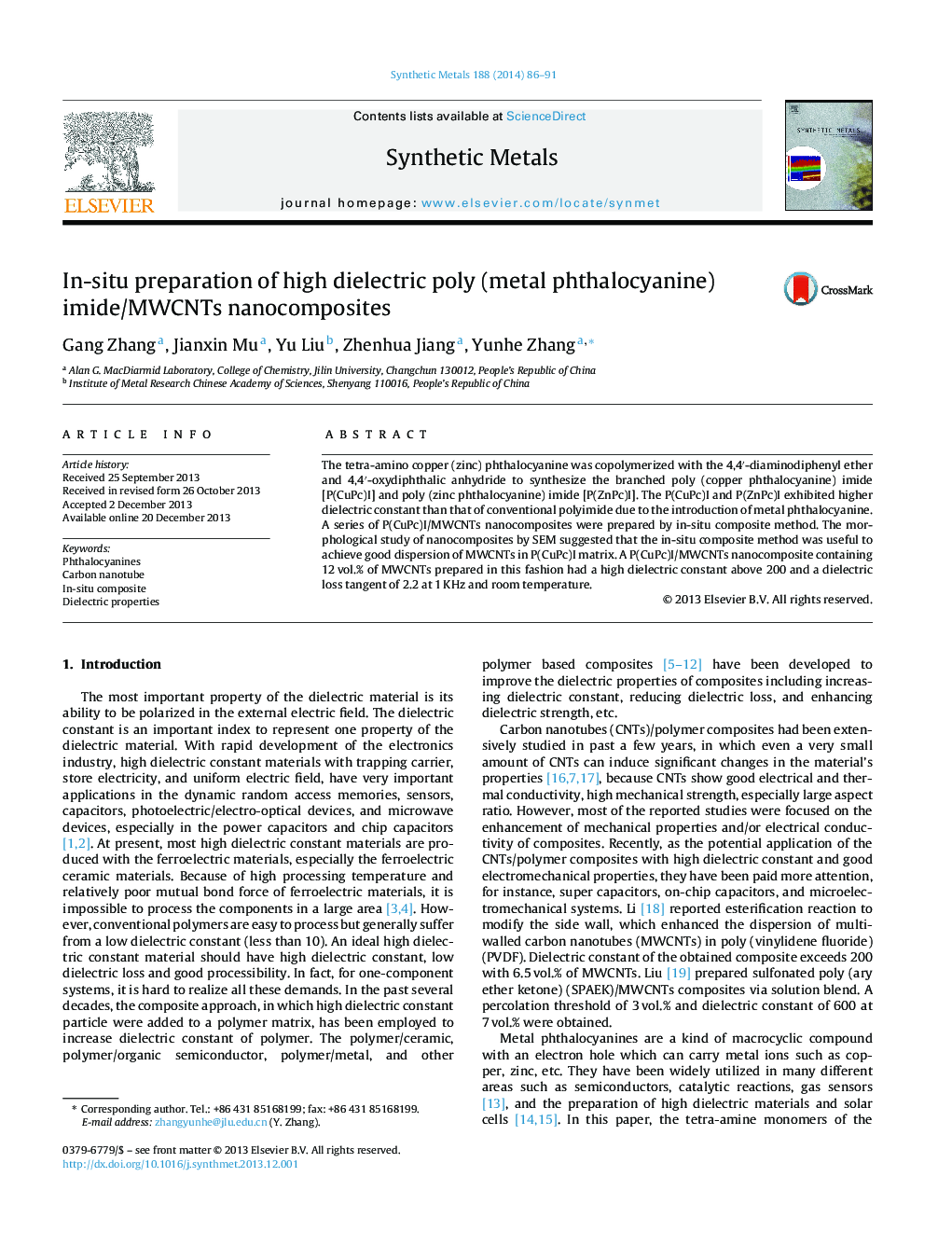| Article ID | Journal | Published Year | Pages | File Type |
|---|---|---|---|---|
| 1441073 | Synthetic Metals | 2014 | 6 Pages |
•A series of P(CuPc)I/MWCNTs nanocomposites were prepared by in-situ composite method.•The in-situ composite method was useful to achieve good dispersion of MWCNTs.•The nanocomposites show high dielectric constant and low dielectric loss.
The tetra-amino copper (zinc) phthalocyanine was copolymerized with the 4,4′-diaminodiphenyl ether and 4,4′-oxydiphthalic anhydride to synthesize the branched poly (copper phthalocyanine) imide [P(CuPc)I] and poly (zinc phthalocyanine) imide [P(ZnPc)I]. The P(CuPc)I and P(ZnPc)I exhibited higher dielectric constant than that of conventional polyimide due to the introduction of metal phthalocyanine. A series of P(CuPc)I/MWCNTs nanocomposites were prepared by in-situ composite method. The morphological study of nanocomposites by SEM suggested that the in-situ composite method was useful to achieve good dispersion of MWCNTs in P(CuPc)I matrix. A P(CuPc)I/MWCNTs nanocomposite containing 12 vol.% of MWCNTs prepared in this fashion had a high dielectric constant above 200 and a dielectric loss tangent of 2.2 at 1 KHz and room temperature.
Graphical abstractFigure optionsDownload full-size imageDownload as PowerPoint slide
